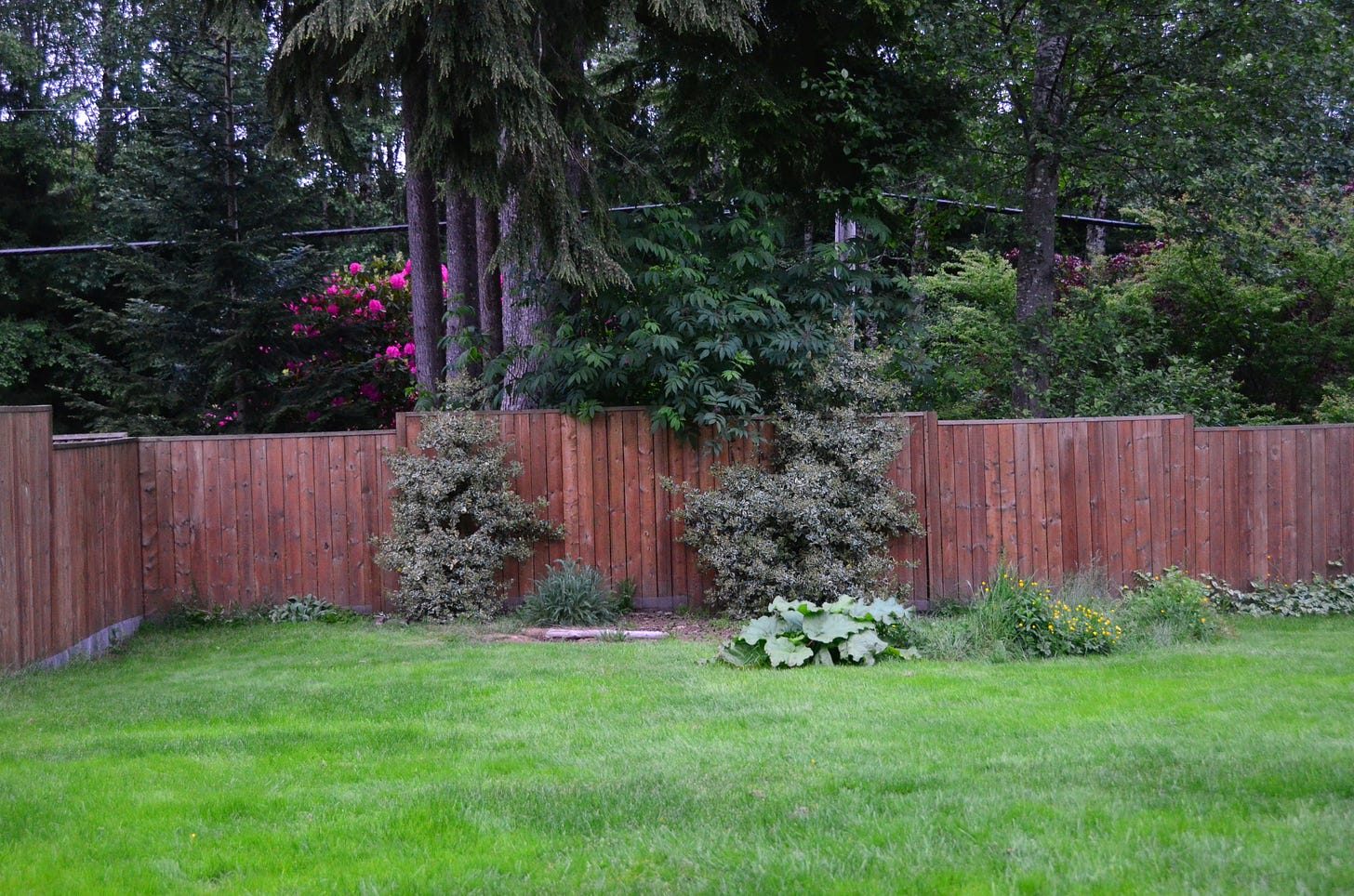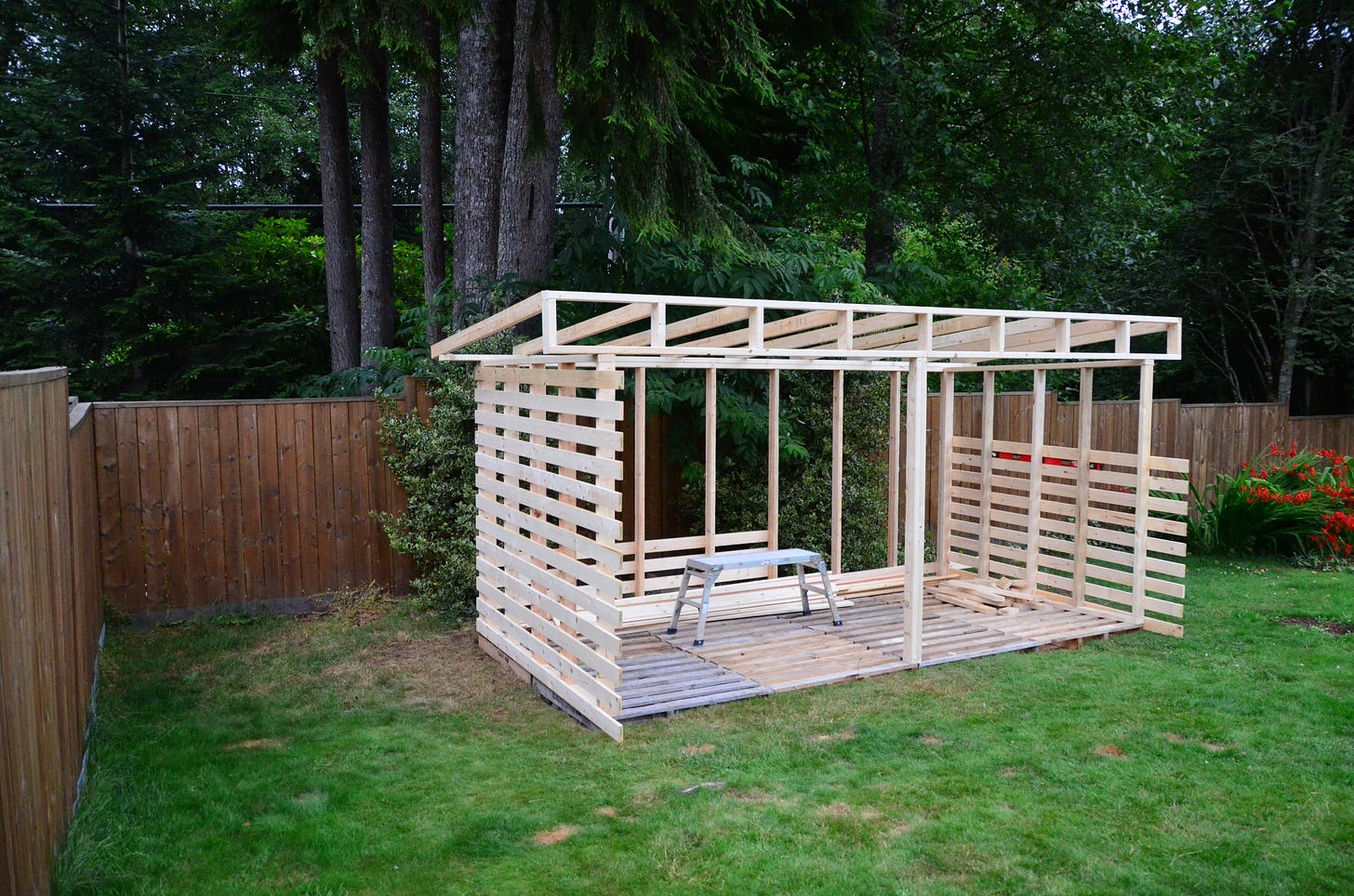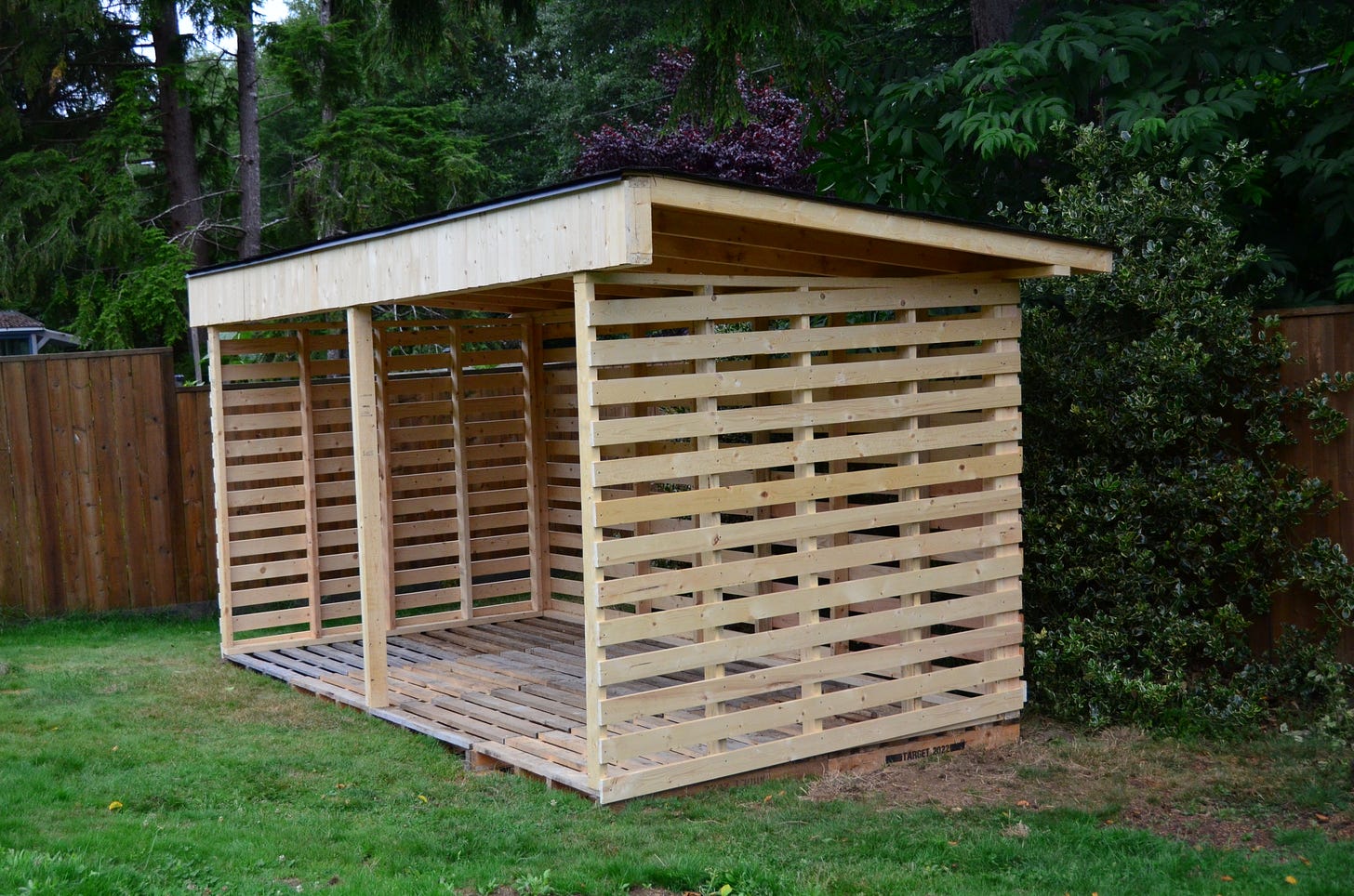Here is our wonderful woodshed, which was constructed earlier this year, now nearly full after an entire day with a rented wood splitter and another day to stack the pieces. (Also pictured is the wonderful Kai.) This is our firewood for this winter, next winter, and maybe even some for the winter of 2024-25. It’s hard to say, though, because I’m not certain exactly how much we burn during the winter months. Over the summer, I’ll stack stove-ready pieces in rows to the ceiling on the right-hand side, so I’ll be able to see exactly what we use next winter.
I’d love to stay two years ahead of schedule (at least one year, anyway) so the wood has time to cure during our brief summers in the north end of Vancouver Island. We are probably going to purchase a wood splitter in the next few years because although I enjoy splitting firewood and it’s good exercise, using the splitter is far easier (though I was a bit surprised to find it’s still physical work). We often (and with the last few loads, usually) receive the wood in huge round pieces that weigh a lot (75-100 pounds?) and those pieces are not cured, so there is no way me and my amazing Fiskars ax are going to split them.
Having a wood splitter of our own will mean I can do an hour here and an hour there and not have to rent a machine and spent all day with it. I will turn 60 (gulp and wtactualf?) next fall and in the last few years I’ve found that prolonged periods of manual work really take a toll on my hands, which also have been steadily typing (for paid work, writing, and other things) for the last three-plus decades. I sustained some damage to my right hand while spending three days sanding and refurnishing our deck last summer; I couldn’t make a full fist for roughly three weeks afterwards. And because I’d like very much to have proper use of my hands for as long as possible (ideally, the rest of my life), making wood splitting less arduous soon will become essential.








The shed is in the back of the back yard. It's not so far. I usually load up the wheelbarrow and bring it to the deck steps, then carry loads of wood in through the deck door that's right by the stove. Three or four wheelbarrows of wood can be stacked next to the stove. I'd love to bring in more each time, but there really is no good place to keep it. (The garage stays too damp to realistically store wood (plus no circulating air).)
We rented an old farmhouse in Unity Maine for a few years--classic New England attached architecture: big house, little house, back house, barn. Not to mention (all connected so you could run the farm without worrying about snow): ice house, carriage shed, toolhouse, workshop, two holer, horse stable, and a woodshed of a size to store enough wood to feed two cookstoves (summer kitchen, winter kitchen) and four round oak parlor heaters.